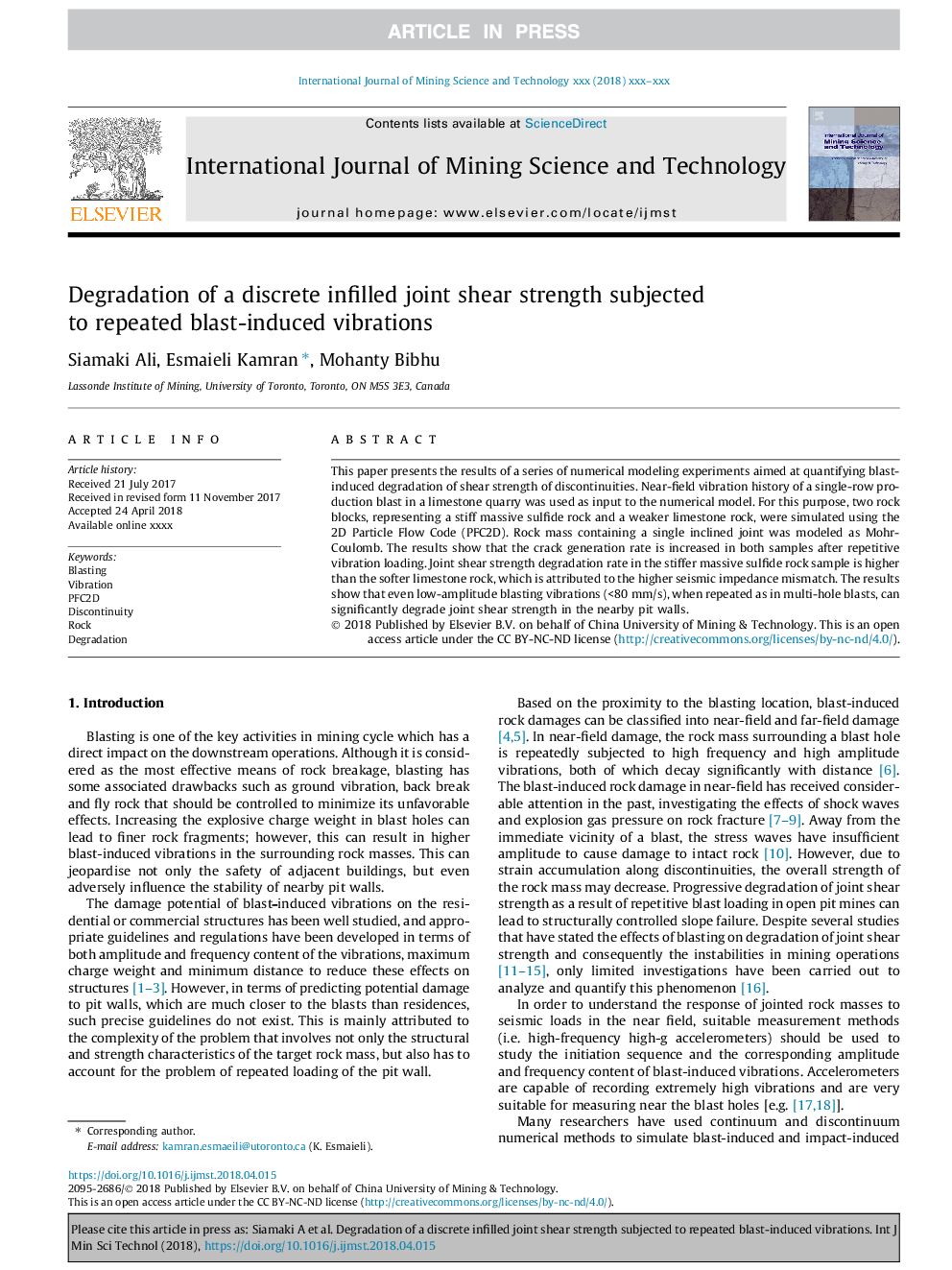| Article ID | Journal | Published Year | Pages | File Type |
|---|---|---|---|---|
| 6747708 | International Journal of Mining Science and Technology | 2018 | 11 Pages |
Abstract
This paper presents the results of a series of numerical modeling experiments aimed at quantifying blast-induced degradation of shear strength of discontinuities. Near-field vibration history of a single-row production blast in a limestone quarry was used as input to the numerical model. For this purpose, two rock blocks, representing a stiff massive sulfide rock and a weaker limestone rock, were simulated using the 2D Particle Flow Code (PFC2D). Rock mass containing a single inclined joint was modeled as Mohr-Coulomb. The results show that the crack generation rate is increased in both samples after repetitive vibration loading. Joint shear strength degradation rate in the stiffer massive sulfide rock sample is higher than the softer limestone rock, which is attributed to the higher seismic impedance mismatch. The results show that even low-amplitude blasting vibrations (<80â¯mm/s), when repeated as in multi-hole blasts, can significantly degrade joint shear strength in the nearby pit walls.
Related Topics
Physical Sciences and Engineering
Earth and Planetary Sciences
Economic Geology
Authors
Siamaki Ali, Esmaieli Kamran, Mohanty Bibhu,
